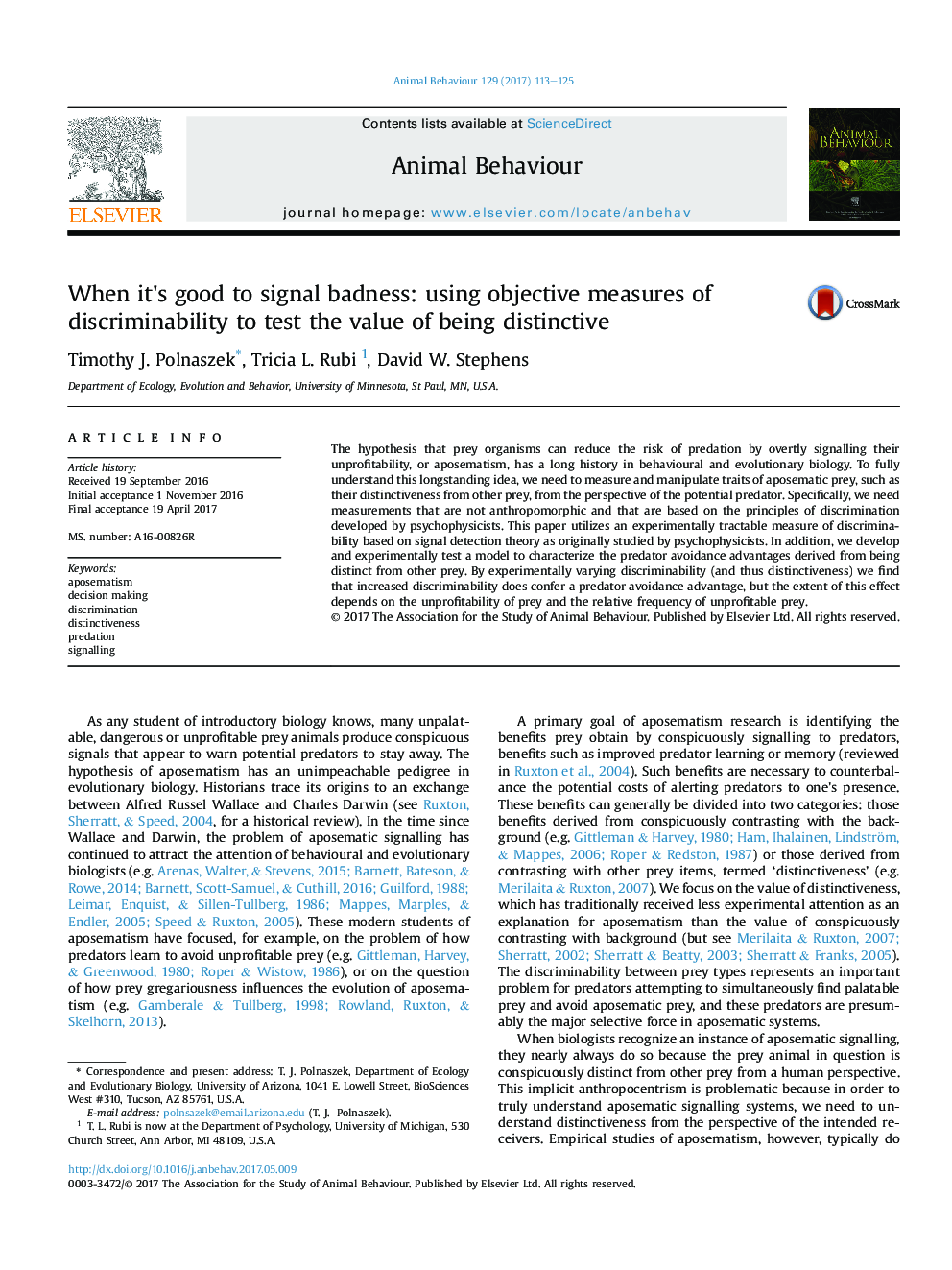| Article ID | Journal | Published Year | Pages | File Type |
|---|---|---|---|---|
| 5538485 | Animal Behaviour | 2017 | 13 Pages |
Abstract
The hypothesis that prey organisms can reduce the risk of predation by overtly signalling their unprofitability, or aposematism, has a long history in behavioural and evolutionary biology. To fully understand this longstanding idea, we need to measure and manipulate traits of aposematic prey, such as their distinctiveness from other prey, from the perspective of the potential predator. Specifically, we need measurements that are not anthropomorphic and that are based on the principles of discrimination developed by psychophysicists. This paper utilizes an experimentally tractable measure of discriminability based on signal detection theory as originally studied by psychophysicists. In addition, we develop and experimentally test a model to characterize the predator avoidance advantages derived from being distinct from other prey. By experimentally varying discriminability (and thus distinctiveness) we find that increased discriminability does confer a predator avoidance advantage, but the extent of this effect depends on the unprofitability of prey and the relative frequency of unprofitable prey.
Related Topics
Life Sciences
Agricultural and Biological Sciences
Animal Science and Zoology
Authors
Timothy J. Polnaszek, Tricia L. Rubi, David W. Stephens,
